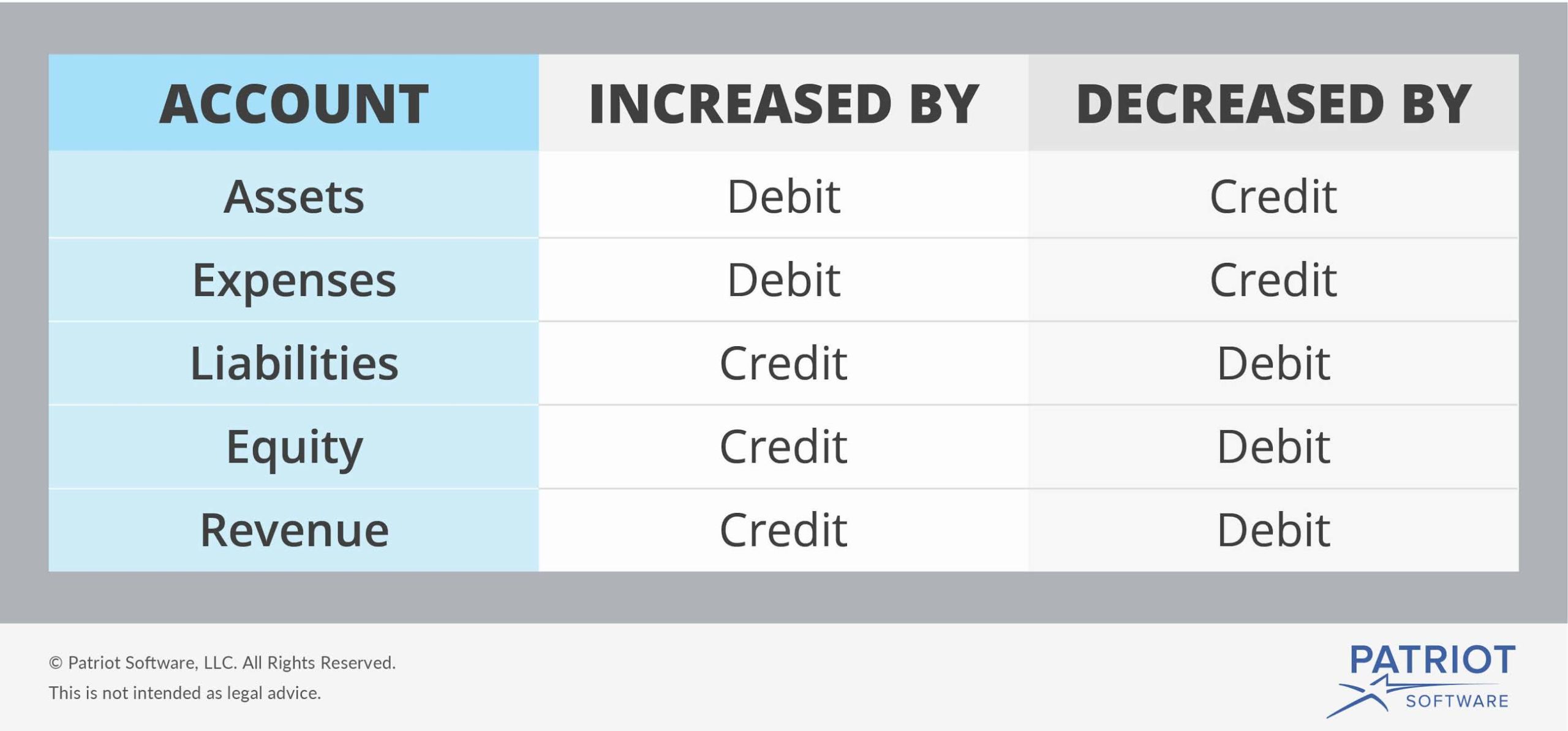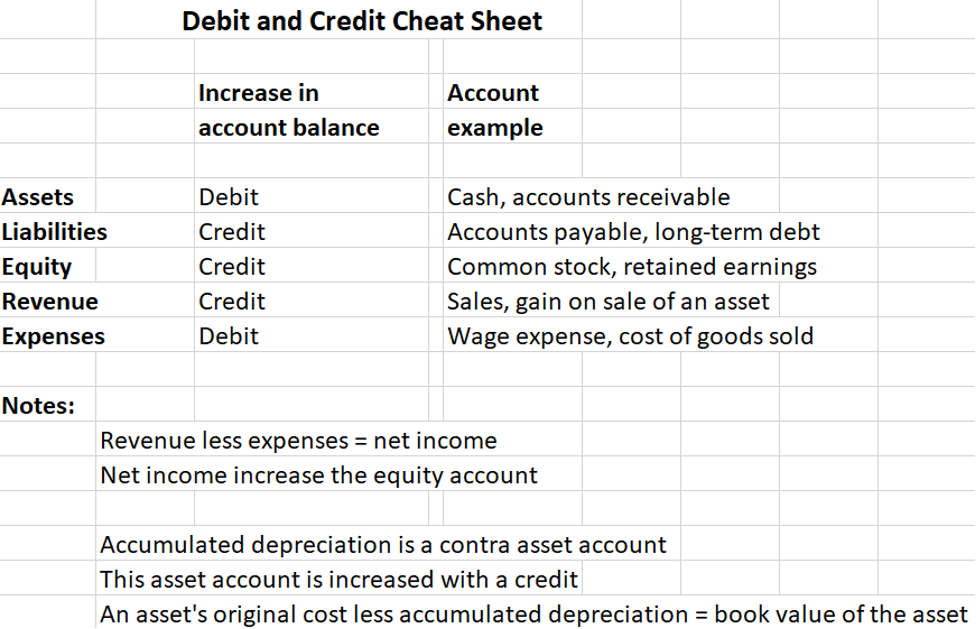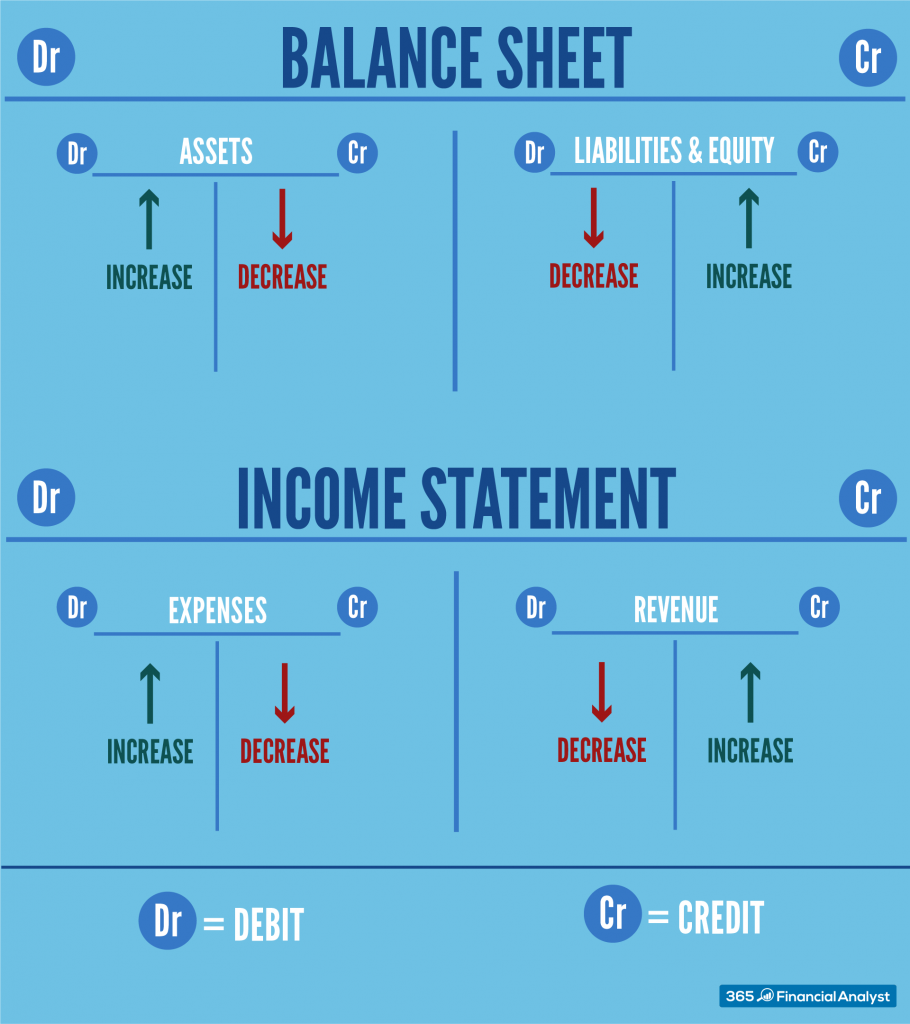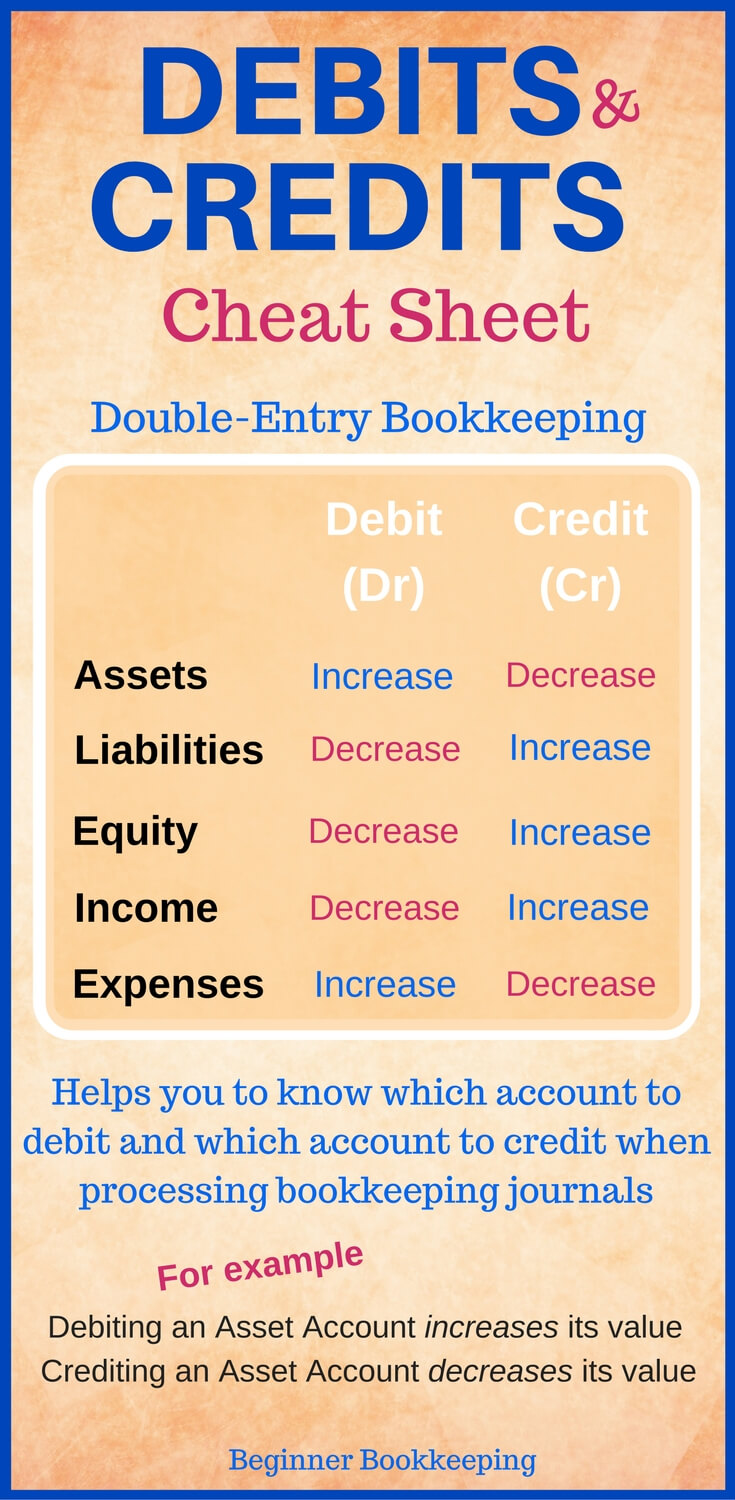Credits And Debits Cheat Sheet - The easiest way to remember the meaning of debit and credit in accounting is as follows: If a value is placed into the debit. If a value is placed into the credit column of the assets account, it will decrease the total value of that account. Get the debits and credits 'cheat' sheet. Debits and credits debit cash, credit asset, debit accumulated depreciation, debit loss on sale bonds financial instrument (agreement) issued by a company to borrow money from. What are the five rules of debits and credits? As a general rule, if a debit increases 1 type of account, a credit will decrease it. Asset accounts normally have debit balances. When you deposit money in your bank account you are increasing or debiting your checking account. Use the cheat sheet in this article to get to grips with how credits and debits affect your accounts.
Use the cheat sheet in this article to get to grips with how credits and debits affect your accounts. Debits and credits debit cash, credit asset, debit accumulated depreciation, debit loss on sale bonds financial instrument (agreement) issued by a company to borrow money from. If a value is placed into the debit. When you deposit money in your bank account you are increasing or debiting your checking account. Asset accounts normally have debit balances. The easiest way to remember the meaning of debit and credit in accounting is as follows: What are the five rules of debits and credits? If a value is placed into the credit column of the assets account, it will decrease the total value of that account. Get the debits and credits 'cheat' sheet. As a general rule, if a debit increases 1 type of account, a credit will decrease it.
If a value is placed into the debit. As a general rule, if a debit increases 1 type of account, a credit will decrease it. Get the debits and credits 'cheat' sheet. The easiest way to remember the meaning of debit and credit in accounting is as follows: Use the cheat sheet in this article to get to grips with how credits and debits affect your accounts. Debits and credits debit cash, credit asset, debit accumulated depreciation, debit loss on sale bonds financial instrument (agreement) issued by a company to borrow money from. What are the five rules of debits and credits? Asset accounts normally have debit balances. If a value is placed into the credit column of the assets account, it will decrease the total value of that account. When you deposit money in your bank account you are increasing or debiting your checking account.
Debits and Credit Cheat Sheet Bookkeeping, Debit, Quickbooks
Asset accounts normally have debit balances. If a value is placed into the debit. What are the five rules of debits and credits? If a value is placed into the credit column of the assets account, it will decrease the total value of that account. As a general rule, if a debit increases 1 type of account, a credit will.
Printable Debits And Credits Cheat Sheet
If a value is placed into the debit. Get the debits and credits 'cheat' sheet. When you deposit money in your bank account you are increasing or debiting your checking account. What are the five rules of debits and credits? If a value is placed into the credit column of the assets account, it will decrease the total value of.
Printable Debits And Credits Cheat Sheet
What are the five rules of debits and credits? Asset accounts normally have debit balances. As a general rule, if a debit increases 1 type of account, a credit will decrease it. If a value is placed into the credit column of the assets account, it will decrease the total value of that account. Use the cheat sheet in this.
Debits and Credits Cheat Sheet • 365 Financial Analyst
The easiest way to remember the meaning of debit and credit in accounting is as follows: Debits and credits debit cash, credit asset, debit accumulated depreciation, debit loss on sale bonds financial instrument (agreement) issued by a company to borrow money from. Use the cheat sheet in this article to get to grips with how credits and debits affect your.
Printable Debits And Credits Cheat Sheet
When you deposit money in your bank account you are increasing or debiting your checking account. Use the cheat sheet in this article to get to grips with how credits and debits affect your accounts. Debits and credits debit cash, credit asset, debit accumulated depreciation, debit loss on sale bonds financial instrument (agreement) issued by a company to borrow money.
Printable Debits And Credits Cheat Sheet
What are the five rules of debits and credits? If a value is placed into the debit. Asset accounts normally have debit balances. If a value is placed into the credit column of the assets account, it will decrease the total value of that account. Get the debits and credits 'cheat' sheet.
Printable Debits And Credits Cheat Sheet
Asset accounts normally have debit balances. Debits and credits debit cash, credit asset, debit accumulated depreciation, debit loss on sale bonds financial instrument (agreement) issued by a company to borrow money from. Get the debits and credits 'cheat' sheet. If a value is placed into the debit. When you deposit money in your bank account you are increasing or debiting.
Printable Debits And Credits Cheat Sheet
Use the cheat sheet in this article to get to grips with how credits and debits affect your accounts. When you deposit money in your bank account you are increasing or debiting your checking account. Debits and credits debit cash, credit asset, debit accumulated depreciation, debit loss on sale bonds financial instrument (agreement) issued by a company to borrow money.
Printable Debits And Credits Cheat Sheet
As a general rule, if a debit increases 1 type of account, a credit will decrease it. When you deposit money in your bank account you are increasing or debiting your checking account. Use the cheat sheet in this article to get to grips with how credits and debits affect your accounts. Asset accounts normally have debit balances. Debits and.
Debit And Credit Cheat Sheet General Ledger Debits Credits
Asset accounts normally have debit balances. Use the cheat sheet in this article to get to grips with how credits and debits affect your accounts. Get the debits and credits 'cheat' sheet. If a value is placed into the debit. The easiest way to remember the meaning of debit and credit in accounting is as follows:
The Easiest Way To Remember The Meaning Of Debit And Credit In Accounting Is As Follows:
If a value is placed into the credit column of the assets account, it will decrease the total value of that account. Get the debits and credits 'cheat' sheet. When you deposit money in your bank account you are increasing or debiting your checking account. Asset accounts normally have debit balances.
Use The Cheat Sheet In This Article To Get To Grips With How Credits And Debits Affect Your Accounts.
As a general rule, if a debit increases 1 type of account, a credit will decrease it. Debits and credits debit cash, credit asset, debit accumulated depreciation, debit loss on sale bonds financial instrument (agreement) issued by a company to borrow money from. What are the five rules of debits and credits? If a value is placed into the debit.









